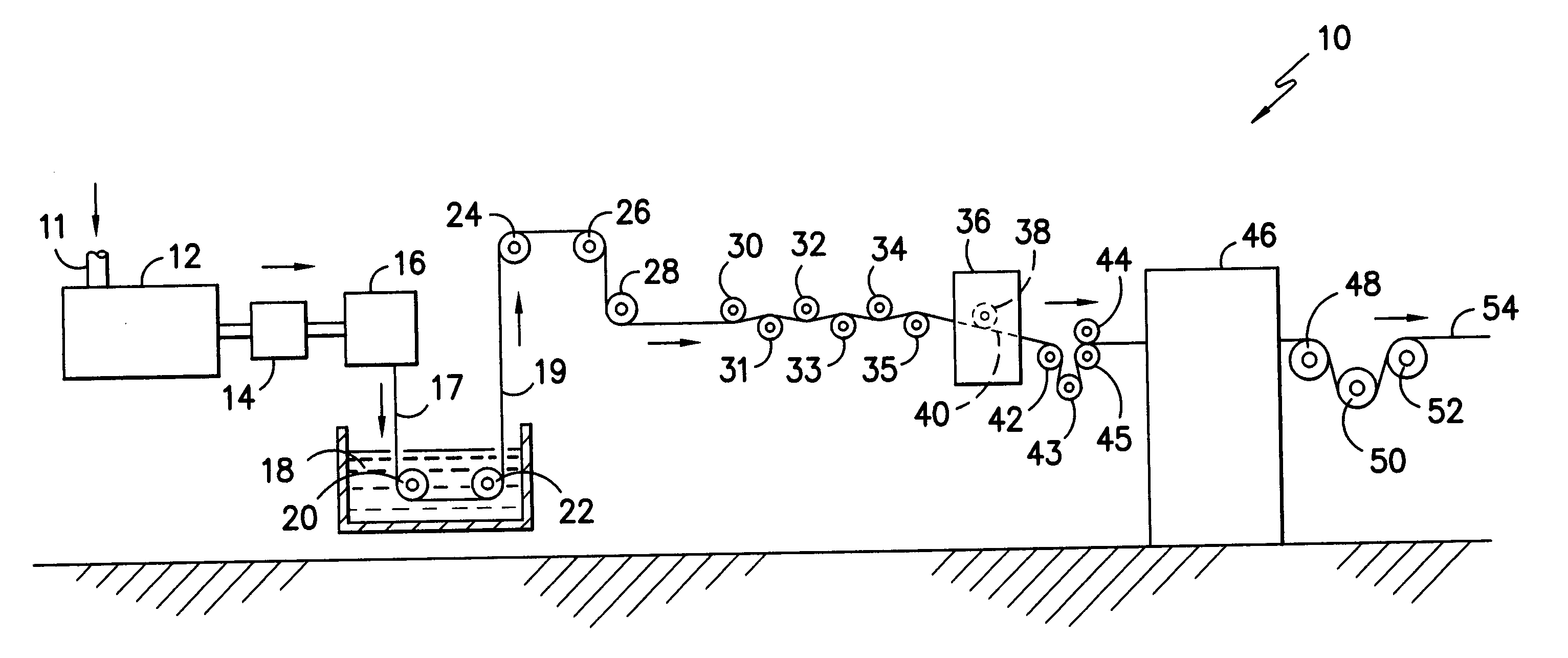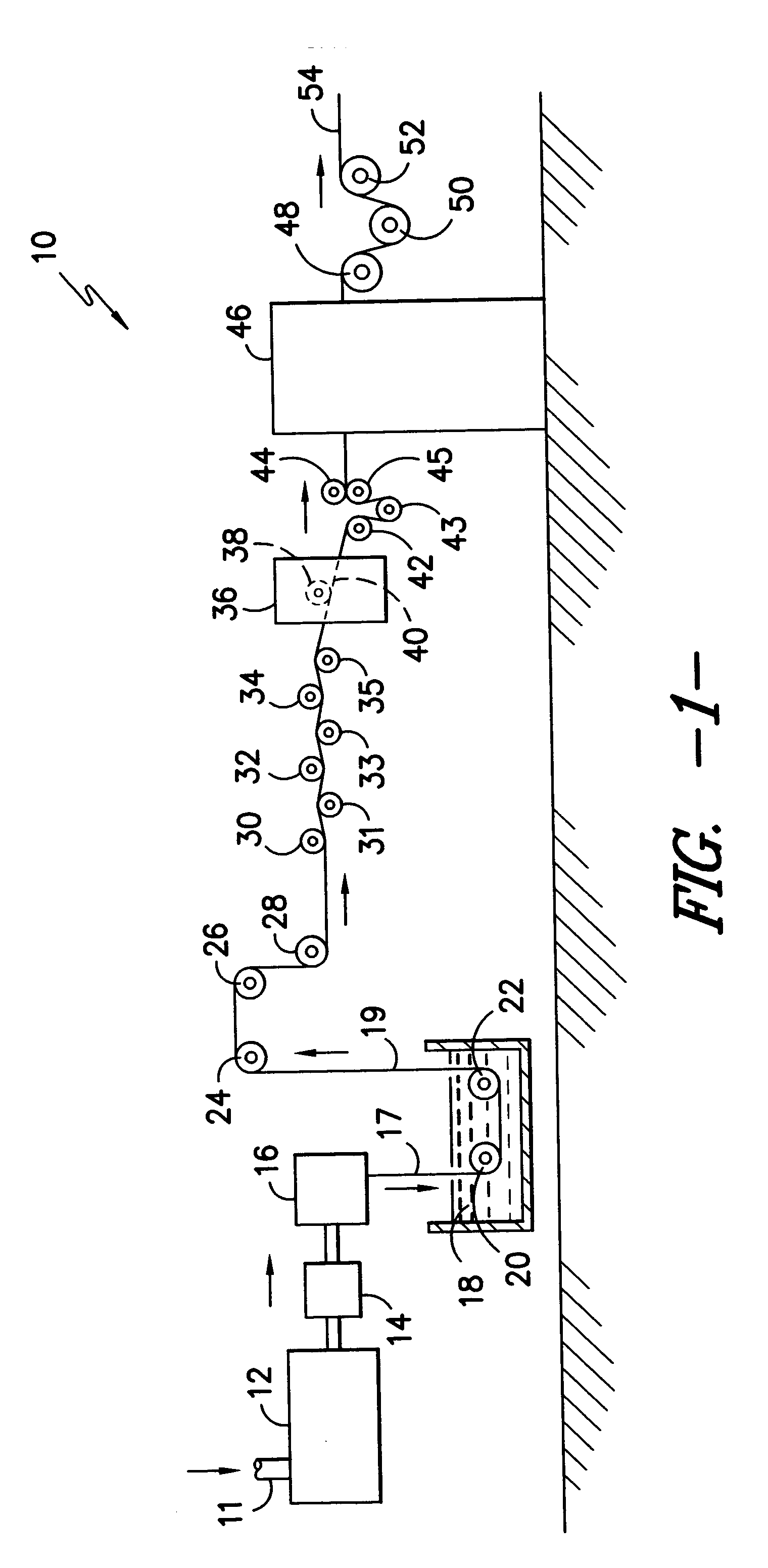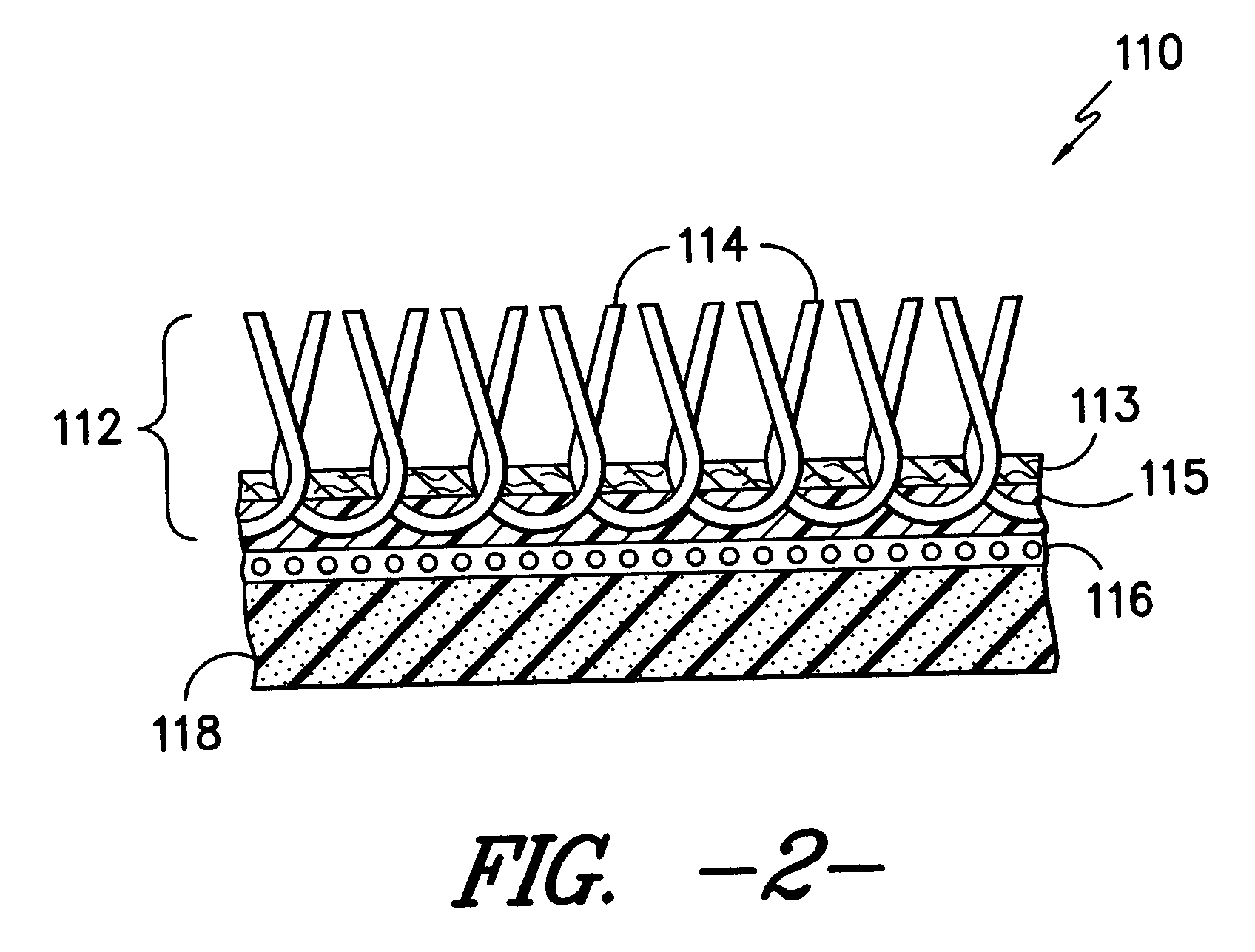Low-shrink polypropylene tape fibers comprising high amounts of nucleating agents
a polypropylene tape fiber and high-shrink technology, which is applied in the field of low-shrink polypropylene tape fibers comprising high-shrink nucleating agents, can solve the problems of high shrinkage rate, residual shrinkage effect of article itself, and high undesirable warping or ripling of final carpet products, and achieves the lowest shrinkage rate, low crystalline size, and high solubility
- Summary
- Abstract
- Description
- Claims
- Application Information
AI Technical Summary
Benefits of technology
Problems solved by technology
Method used
Image
Examples
example 1
[0032] The carpet backing slit film fibers were made on the standard production equipment as described above at a production rate of 500 ft / min as follows: A 3.5-3.8 melt flow homopolymer polypropylene resin (P4G32-050, from Huntsman) was blended with an additive concentrate consisting of 4 MFI homopolypropylene resin and a nucleator in amounts as listed below in TABLE 1. The blending ratio was changed to adjust the final additive level, as shown in the table below. This mixture, consisting of PP resin and the additive, was extruded with a single screw extruder through a film dye approximately 72 inches wide. The PP flow was adjusted to give a final tape thickness of approximately 0.0025 inches. The molten film was quenched in room temperature (about 25.degree. C.) water, then transferred by rollers to a battery of knives, which cut it into parallel strips. At additive levels above approximately 100 ppm concentration of 4-methyl-DBS (aka, p-methyl-DBS) the film appeared clear. The f...
PUM
| Property | Measurement | Unit |
|---|---|---|
| shrinkage rate | aaaaa | aaaaa |
| shrinkage rate | aaaaa | aaaaa |
| shrinkage | aaaaa | aaaaa |
Abstract
Description
Claims
Application Information
 Login to View More
Login to View More - R&D
- Intellectual Property
- Life Sciences
- Materials
- Tech Scout
- Unparalleled Data Quality
- Higher Quality Content
- 60% Fewer Hallucinations
Browse by: Latest US Patents, China's latest patents, Technical Efficacy Thesaurus, Application Domain, Technology Topic, Popular Technical Reports.
© 2025 PatSnap. All rights reserved.Legal|Privacy policy|Modern Slavery Act Transparency Statement|Sitemap|About US| Contact US: help@patsnap.com



